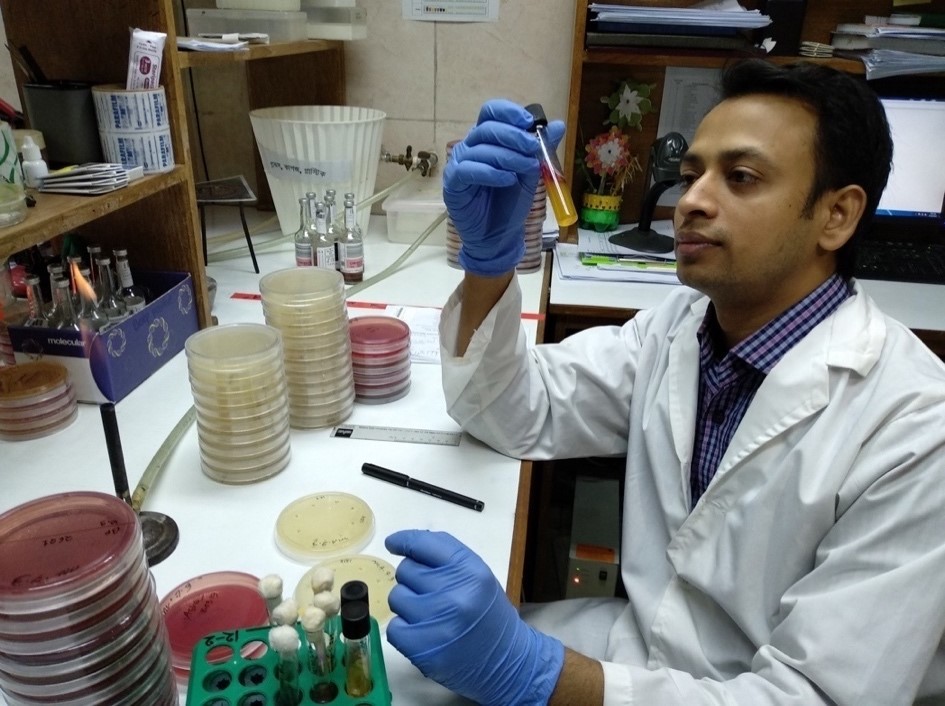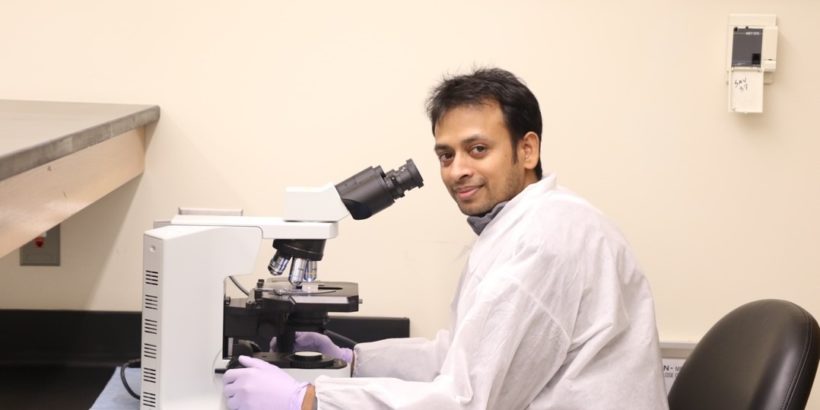Frontline healthcare workers—physicians, nurses, laboratory personnel, community health workers (CHWs), and social mobilizers—confront typhoid in their communities every day, and therefore have an integral role in typhoid prevention and control. During the 11th International Conference on Typhoid and Other Salmonelloses we celebrated a few of these exemplary healthcare workers and the many ways each of them is working to take on typhoid. Now, we are pleased to share their work and highlight the impact each is having in their local community in our four-part blog series, “Prevention in Action.”
We continue the series with Hafiz Rahman, a senior research technologist at Child Health Research Foundation and Dhaka Shishu (Children) Hospital in Bangladesh. This is his story.
—
My name is Hafiz. I pursued my Diploma in Medical Technology course 10 years ago. As a Senior Researcher Technologist in the microbiology laboratory at Child Health Research Foundation (CHRF) in Dhaka, Bangladesh, I am the person in the laboratory who first confronts the microorganisms responsible for typhoid.
Around the world, being a technologist is not considered an especially glamorous profession; the title has little to no professional exposure in society. In fact, most people don’t know what it is that I really do. Despite this, I love my job. Every day, I get to use science in an amazing way that not only is of extreme interest to me but also helps to save lives.
Typhoid is a common cause of illness in Bangladesh, and is frequently seen in Dhaka Shishu (Children) Hospital, the largest pediatric hospital in the country. As the microbiology laboratory associated with Dhaka Shishu, CHRF is responsible for testing all of the samples—from blood to cerebrospinal fluid (CSF), urine, sputum, and even stools—for any child presenting with three or more days of consecutive fever within the last seven days. As such, we receive a near constant influx of samples. On most days, I receive about 30 samples; of these, usually three test positive for typhoid.

A missed diagnosis can mean the difference between life and death for the child, so accuracy and consistency are critical aspects of my work. Each procedure in the laboratory is unique, and I must understand the basic principles of each test being performed. When a standard test fails to identify the true pathogen, I immediately jump into “laboratory detective” mode to try and figure out the most effective and efficient way to get an accurate diagnosis. For example, when a blood sample is collected from a sick young child who presents with a high fever, the sample is often not enough to perform all of the various tests to determine what is making the child ill. In this case, I have to revise my methods utilizing the experience I have gained throughout my career, being sure to manage my time and resources efficiently while also applying the appropriate approach. As I often find myself in situations such as these, it is important that I remain up to date on the latest advancements in clinical laboratory science, continuously adapting my understanding of various techniques and microorganisms.
This adaptability is extremely important as we confront the challenge of drug resistance. The rising trend of drug resistance has major consequences for my work in the laboratory and in the larger typhoid prevention and control effort. Last year, my laboratory identified a new typhoid strain in Bangladesh with high-level resistance to first-line antibiotics. This worrying evolution of drug resistance is likely a result of parents treating their children with inappropriate antibiotics from the local pharmacy without consulting a physician first. As a result, many children with suspected typhoid in Bangladesh are being treated with third-generation Celphalosporins instead of more appropriate first-line antibiotics. Now it is standard procedure for my staff and me to always preform Antimicrobial Susceptibility Test (AST) profiling for typhoid-positive samples to determine which treatment options are most appropriate for the patient. I take extreme care when preforming this test, and urge my staff to do so as well, because without the appropriate antibiotic an ill person’s condition may only worsen.
I know the importance of my work and that without it many more children would not recover from typhoid. I also know that it is important for me to look beyond my traditional role to see how I can contribute to larger disease prevention and control efforts. I regularly study new tests and methods and try to modify my daily protocols to keep pace with current and evolving technologies. I contribute to laboratory standard operating procedures (SOPs) and research manuscripts. I present my laboratory’s work in front of stakeholders and researchers at public forums, such as the International Conference on Typhoid and Other Invasive Salmonelloses. I mentor a team of junior technologists and encourage others to enter into this important field. I feel lucky that in this role I can contribute to my country and people, ensuring that they are more protected from a disease as devastating as typhoid.
Photos courtesy of Child Health Research Foundation.



